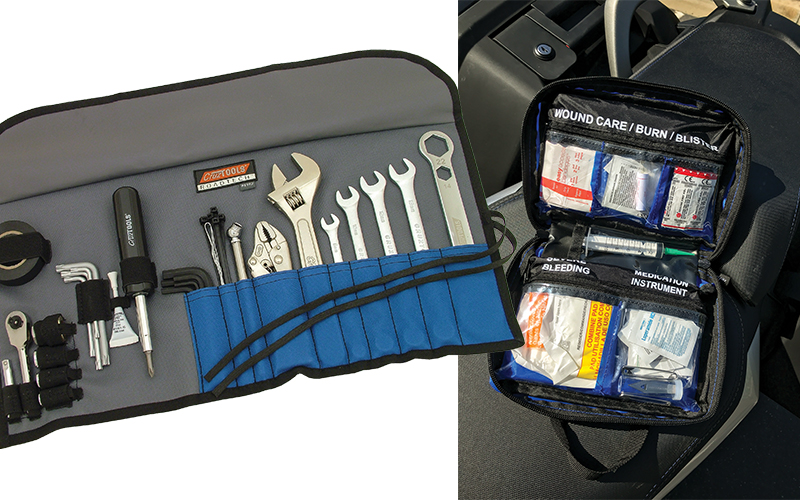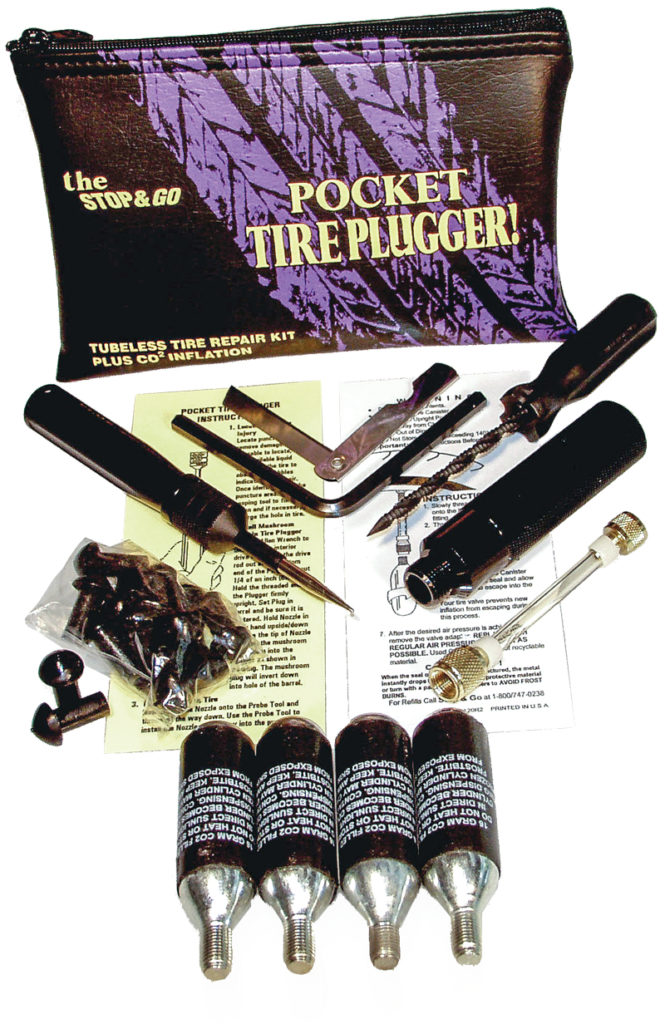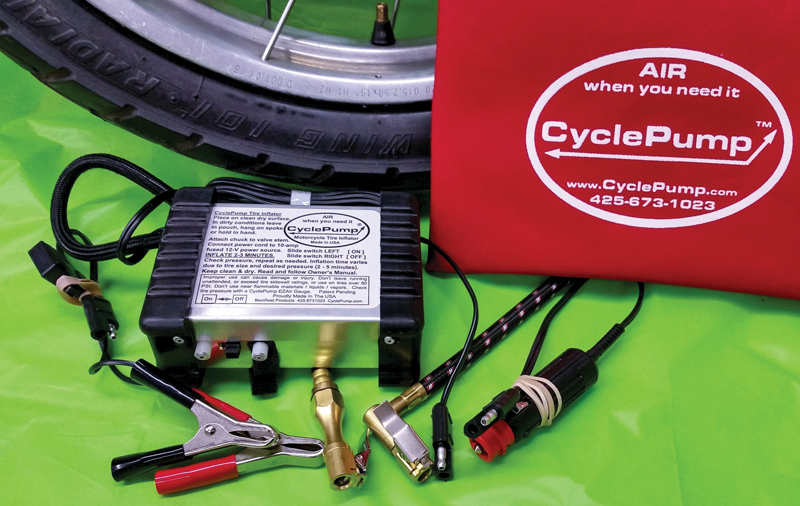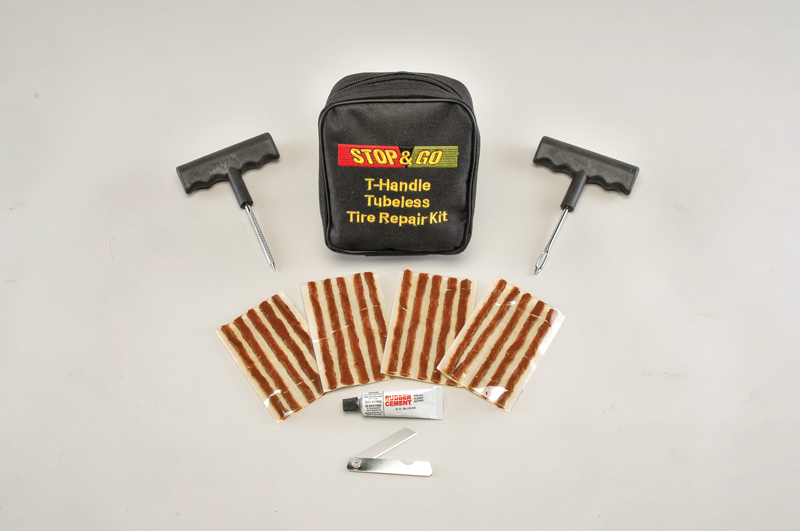
For some riders the feeling of solitude on a motorcycle is unbeatable. It’s just you, the bike and the road. But if something happens–a flat tire, say, or a snapped clutch cable–suddenly that solitude is a liability. It’s at times like these that you need to be prepared for the unexpected and have the resources to deal with it.
Start with a good toolkit. The one that came with your bike is a starting point, if only to show you what you need to perform the most basic tasks. Some toolkit tools should probably have “Fisher-Price” stamped on them, so replace the dodgy ones with good, name-brand tools that won’t round off bolts or gouge out Phillips screws.
You could also get a ready-made kit from a company like CruzTools, which sells kits tailored to certain brands of bikes, types of riding and planned uses. Custom kits are available for streetbikes, off-road bikes and even Harleys and KTMs.
Keep an eye on the work you regularly do on the bike, determine which jobs you might have to do on the road or in a motel parking lot and add whatever tools it takes to do that.
As the owner of an 11-pound tool roll the size of a hardbound copy of “War and Peace” I can attest that it’s easy to go overboard with this. By the time you can work on the bike without ever resorting to your big Snap-on toolbox, you’ve gone far enough.
In addition to tools, find somewhere to stash some extra fuses, a small roll of duct tape (winding some around a pencil stub works well), a roll of safety wire, a couple of tire valve stems, a bundle of zip ties, a shop rag or two and a pair of cotton or latex work gloves. The fastidious rider also carries a small bottle of hand soap or wipes.
A tire repair kit is a must-have for anyone riding out of cell-phone range of a towing service. I have an aversion to tube-type tires because I’m neither skilled nor brave enough to take off a wheel in the breakdown lane of I-5 to replace a tube.
For tubeless tires I carry a small Stop & Go repair kit with rubber plugs, an insertion tool and a small air pump that runs off the bike’s battery. I prefer the pump to CO₂, which when it’s gone is gone, whereas the pump keeps going as long as the battery lasts.



An unwillingness to put myself totally at the mercy of technology compels me to carry a small notebook with the names and numbers of everyone in my cell phone’s contact list in case the phone dies or I lose it.
I also have a separate sheet of paper in a self-sealing plastic bag with all my contact and medical info, including the meds I take. I’ve been in two bad crashes, and in one of them I was in no shape to answer the paramedic’s questions coherently; that sheet would have really helped then.
A first aid kit is a fine addition to your emergency gear, but not unless you know how to use it—waving it over an injury like incense won’t help. The Red Cross offers courses in first aid, CPR and other lifesaving techniques in many areas.
A good toolkit can save a ride, but first aid knowledge can save a life.







